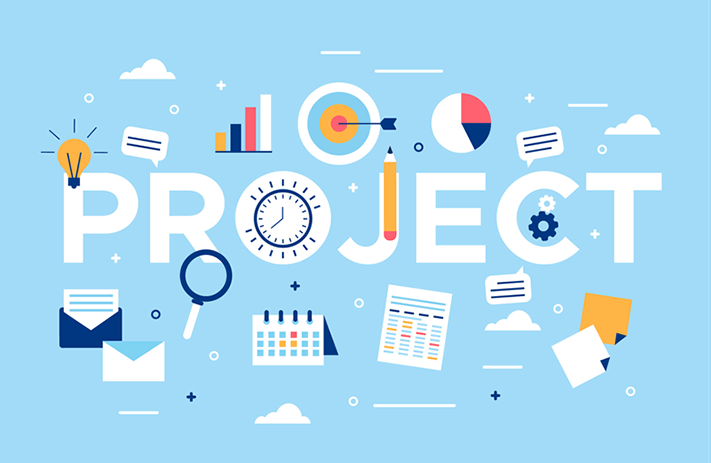
Click the button to start reading
Reaching Higher Levels of Maturity: An Essential Look at The Project Management Maturity Model
In nature, organisms grow.
This growth is characterized by an increase in size or mass, or both.
Essentially it’s the ability of an organism to adapt to and thrive in its environment. This could be through developing new capabilities or becoming more complex.
You could say that maturity is the pinnacle of growth.
Maturity is when an organism has reached its full potential and is able to adequately cope with any challenges its environment throws its way.
In the business world, maturity is often associated with success. A mature company is one that has established itself as a leader in its industry, with a solid track record of financial stability and growth.
The Project Management Maturity Model (PMMM) is a framework that helps organizations assess and improve their project management abilities.
In essence, the PMMM is a way of thinking about organizational growth in the context of project management. Just as there are different stages of growth for an individual organism, there are also different stages of growth for an organization’s project management practices.
In this post, we’ll look at the PMMM in more depth, as well as the five development stages that organizations follow when developing their project management methods. We’ll also look at each level’s areas of concentration and associated advantages. As well as a look into 10 areas of application for the PMMM.

PMMM a Short History..
Project management maturity models are not new—in fact, the PMMM owes its existence to earlier work on process maturity models. In the late 1980s and early 1990s, the Software Engineering Institute (SEI) at Carnegie Mellon University developed a capability maturity model (CMM) for software development.
The CMM was based on the premise that organizations mature in their development processes over time, and that this maturity could be measured. The model identified five levels of maturity, with level 1 being the lowest and level 5 the highest.
The CMM was very successful and led to the development of other process maturity models, such as the People Capability Maturity Model (PCMM) and the Project Management Maturity Model (PMMM).
The PMMM was developed by the Project Management Institute (PMI) in the late 1990s. It is based on the CMM, but with a focus on project management rather than software development.
Just as with the CMM, the PMMM identifies five levels of maturity, from level 1 (the lowest) to level 5 (the highest). Unlike the CMM, however, the PMMM does not use a sequential numbering system. Instead, it uses a more intuitive naming system that is based on growth stages.

What’s being measured?
The Project Management Maturity Model (PMMM) is a framework that helps organizations assess and improve their project management capabilities.
It does this by measuring an organization’s project management maturity across five different levels:
- Initiating
- Repeating
- Defined
- Managing
- Optimizing
Each stage represents a different level of project management maturity, and organizations can use the PMMM to benchmark their current capabilities against these levels.
What are the benefits?
The PMMM can help organizations benchmark their project management maturity, identify areas for improvement, and develop a roadmap for achieving higher levels of maturity.
Organizations that operate at higher levels of maturity tend to be more successful in executing projects, delivering value to stakeholders, and achieving their overall strategic objectives.
As such, the PMMM can be a valuable tool for organizations that want to improve their project management capabilities.

What’s the process?
The PMMM comprises five different levels of project management maturity: Initiating, Repeating, Defining, Managing, and Optimizing.
Each level represents a different stage of maturity, and organizations can use the PMMM to benchmark their current capabilities against these levels.
To use the PMMM, organizations first need to assess their current project management practices across all five levels. This can be done through surveys, interviews, focus groups, or other methods.
Once the assessment is complete, organizations can compare their results against the PMMM’s benchmarks to see where they fall on the maturity scale.
From there, they can develop a roadmap for improving their project management practices and achieving higher levels of maturity.

Stage 1: Initial
The initial stage is characterized by ad hoc processes and practices. There is little or no formal project management, and projects are typically completed on time and within budget by the sheer force of will of the project manager.
This stage is often referred to as the “wild west” stage, because anything goes and there are no real rules or guidelines to follow. This can be a fun stage to work in, but it is also the most chaotic and least productive. Especially if you are the type of person who likes things to be done a certain way!
Challenges at Stage #1 – Initial
There are three main challenges that project managers face in the Initial stage: coping with uncertainty, maintaining control over the project, and dealing with stakeholders who may be resistant to change.
Let’s take a closer look at each one of these challenges in turn:
1. Coping with Uncertainty:
One of the most difficult things about the Initial stage is that it’s impossible to predict how long it will last. Every project is different, and some will move through this stage more quickly than others. The key is to stay flexible and be prepared for anything. Try to think of each problem as an opportunity to learn something new about your project.
2. Maintaining Control Over the Project:
It can be tempting for project managers to try to exert their authority in an effort to gain control over the project. However, this usually backfires because it creates an environment of fear and mistrust among team members. Instead of trying to control everything, focus on setting clear expectations and establishing communication channels so that everyone is on the same page.
3. Managing Stakeholder Expectations:
One of the most challenging aspects of stakeholder management is dealing with stakeholders who are resistant to change. In many cases, stakeholders are reluctant to embrace new ways of doing things because they’re comfortable with the status quo. As a result, it’s important to have a good understanding of their needs and concerns before trying to implement any changes. Once you’ve identified their key pain points, you can tailor your approach accordingly.

Stage 2: Repeatable
Just like its name suggests, the Repeatable stage is characterized by processes and practices that are repeated on a regular basis. This stage is usually reached after the project manager has gained some experience and has developed a more formal approach to project management.
During this stage, project processes are still incubating and evolving. However, there is more structure and predictability than in the Initial stage. Projects tend to be completed on time and within budget more often than not.
Challenges at Stage #2 – Repeatable
There are three main challenges that project managers face in the Repeatable stage: dealing with complexity, managing expectations, and maintaining control over the process.
1. Dealing with Complexity:
One of the biggest challenges in the Repeatable stage is dealing with the increased complexity that comes with more formal processes and practices. There are more moving parts to keep track of, and it can be difficult to stay organized. The key is to focus on streamlining your process so that it’s as efficient as possible.
Templates and checklists can be helpful in this regard. By having a clear understanding of what needs to be done and when, you can avoid getting bogged down in the details.
2. Managing Expectations:
Another challenge in the Repeatable stage is managing stakeholder expectations. As projects become more complex, it becomes harder to keep everyone on the same page.
This can lead to misunderstandings and frustration on both sides. The key is to over-communicate and make sure that everyone is aware of the project’s current status. Regular updates, both in person and in writing, are essential.
3. Maintaining Control Over the Process:
The final challenge in the Repeatable stage is maintaining control over the project management process. With more formal processes in place, there is a risk of becoming too rigid and inflexible. The key is to strike a balance between being organized and being flexible.
It’s also important to remember that the project management process is not static. As your project evolves, so too should your process. Be prepared to make changes as needed.

Stage 3: Defined
Think of it like this, in the Defined stage, everything is written down. Every process, every best practice, every template—it’s all documented and available for anyone who needs it.
This stage is usually reached after the project manager has gained a significant amount of experience and has developed a deep understanding of the project management process.
The Defined stage is characterized by standardized processes and procedures. Projects are completed more consistently, and there is less room for error.
Challenges at Stage #3 – Defined
There are three main challenges that project managers face in the Defined stage: maintaining quality, ensuring compliance, and dealing with change.
1. Maintaining Quality:
One of the biggest challenges in the Defined stage is maintaining the quality of the project management process. With so many standardized procedures in place, there is a risk of becoming too bureaucratic. The key is to strike a balance between being efficient and being flexible.
It’s also important to remember that the project management process is not static. As your project evolves, so too should your process. Be prepared to make changes as needed.
2. Ensuring Compliance:
Another challenge in the Defined stage is ensuring compliance with the project management process. With so many rules and regulations in place, it can be easy to fall behind. The key is to stay organized and on top of your deadlines.
Regular check-ins with your team can help you identify any areas that need improvement. And don’t be afraid to ask for help when you need it.
3. Dealing With Change:
The final challenge in the Defined stage is dealing with change. Because the project management process is so well-defined, it can be difficult to make changes. The key is to be prepared for change and to have a plan in place for how to deal with it.
Make sure that you have a clear understanding of the project management process and the roles that everyone plays. This will help you make changes as needed without disrupting the flow of the project.

Stage 4: Managed
Congratulations, you’ve made it to the fourth stage of the Project Management Maturity Model: Managed!
This is a big deal—it means that your project management skills are now officially considered “mature.” But what does that actually mean? And how can you tell if you’re truly operating at a managed level?
If the first three stages of the Project Management Maturity Model can be thought of as childhood, adolescence, and adulthood, then the Managed stage is definitely adulthood. This is the point at which projects are well-defined, well-documented, and well-executed. In short, everything is under control.
But just because everything is under control doesn’t mean that there isn’t still room for improvement. After all, even the most mature adults can always stand to learn new things and hone their existing skills.
The key difference is that, at this stage, project managers are aware of both their strengths and their weaknesses—and they have a plan for continuously improving both.
So, how can you tell if you’re operating at a managed level? Let’s take a look at some key indicators.
Check this off your list – Indicators of a Managed Level
You know you’re operating at a managed level when…
- Your projects are delivered on time and on budget.
- Your team members know exactly what they need to do and when they need to do it.
- You have systems and processes in place to prevent scope creep.
- You regularly collect feedback from stakeholders and use it to improve future projects.
- Risks are identified early and mitigation plans are put into place before they become problems.
- Issues are resolved quickly and efficiently without disrupting the rest of the project.
If you can check all of these boxes, then congratulations—you’re officially operating at a managed level! Keep up the good work.

Stage 5: Optimizing
The final stage of the Project Management Maturity Model is Optimizing. This is the point at which project management becomes an integral part of the organization’s culture. In short, it’s the Holy Grail of project management.
At this stage, projects are not only well-defined and well-executed, but they are also continuously improving. This is thanks to a feedback loop that includes all stakeholders—from team members to executive sponsors.
This feedback is used to make data-driven decisions that improve the efficiency and effectiveness of future projects. In other words, it’s a never-ending cycle of continuous improvement.
Check this off your list – Indicators of an Optimizing Level
So, how can you tell if you’re operating at an optimizing level? Let’s take a look at some key indicators. You know you’re operating at an optimizing level when…
- Projects are consistently delivered on time and on budget.
- There is a feedback loop in place that includes all stakeholders.
- Data is collected and used to make decisions about future projects.
- Projects are continuously improving as a result of the feedback loop.
If you can check all of these boxes, then congratulations—you’re officially operating at an optimizing level. This is the highest level of project management maturity, and it’s something to be proud of.

Bringing it home: 10 knowledge areas of project management
Applying the Project Management Maturity Model to your own organization is a great way to gauge where you’re at and where you need to improve. But it’s just one tool in the project management toolbox.
The different knowledge areas required for successful project management are outlined in the Project Management Body of Knowledge Guide (PMBOK) from the Project Management Institute (PMI). This guide is widely accepted as the industry standard for determining which knowledge areas are necessary for effective project management.
- Integration Management: This knowledge area is concerned with the processes and activities necessary to combine all aspects of the project into a coherent whole. This includes creating and maintaining the project schedule, as well as ensuring that all deliverables are integrated properly.
- Scope Management: Defining, validating and controlling the scope of your project is crucial to its success. This includes creating the project charter, as well as developing and maintaining the project scope statement.
- Time Management: Time management is all about creating and maintaining a schedule that meets the needs of the project. This includes activities such as creating the project schedule, estimating activity duration, and identifying and managing project risks.
- Cost Management: Managing the cost of your project is essential to its success. This includes developing the project budget, as well as tracking and controlling project costs.
- Quality Management: Quality is king when it comes to project management. Especially if you’re working on a software development project, it’s important to ensure that the final product meets all quality standards. This includes activities such as creating the project quality plan, as well as conducting quality assurance and quality control activities.
- Human Resources Management: Onboarding and managing project team members is a crucial part of any project manager’s job. This includes activities such as developing the project human resources plan. This ensures legal compliance, as well as creating a positive work environment.
- Communications Management: If you enjoy project destruction, then poor communication is your best friend. On the other hand, if you want your project to succeed, effective communication is key. Learning to manage communications effectively can make or break your project.
- Risk Management: Risk management is all about identifying, assessing and managing risks that could impact your project. What kind of risks? Anything from technical risks to financial risks to political risks. This includes developing the project risk management plan, as well as conducting risk mitigation activities.
- Procurement Management: Not all projects are created equal. Some require the purchase of goods and/or services from external vendors. This is known as procurement, and it’s a whole different ball game from managing an in-house project. This includes developing the procurement management plan, as well as conducting Request for Proposal (RFP) and Request for Information (RFI) processes.
- Stakeholder Management: If you want to survive, you have to be funded. That means keeping your stakeholders happy. Stakeholder management is all about keeping your project’s stakeholders informed and engaged. This includes developing the stakeholder communication plan, as well as conducting stakeholder analysis. Taking the 5 stages and measuring them against these 10 knowledge areas will give you a good idea of where your project management practices need improvement.

Applying the Project Management Maturity Model
Now that you’ve learned about the Project Management Maturity Model, it’s time to put it into practice. Here’s how you can do that:
1. Assess your current project management practices.
Look at the 10 knowledge areas and identify which ones you’re strong in and which ones you need to work on. Be honest with yourself—it’s the only way to improve.
2. Develop a plan for improvement.
Once you’ve identified the areas you need to work on, develop a plan for how you’re going to improve them. This plan should be specific, measurable, achievable, relevant, and time-bound (SMART).
3. Implement your plan.
This is where the rubber meets the road. It’s time to put your plan into action and start making changes to the way you manage projects.
4. Evaluate your progress.
As you implement your plan, take some time to evaluate your progress. This will help you determine whether or not you’re on track to reach your goals.
5. Adjust your plan as needed.
As you evaluate your progress, you may find that some of your goals are no longer relevant or that you need to make changes to the way you’re approaching them. Don’t be afraid to adjust your plan as needed—it’s the only way to ensure that it remains effective.
Project Management Maturity Model – Summary
Have you ever been in a scenario where you were in charge of a project that was quickly going off the rails? Maybe the budget was being overrun, the timeline was slipping, or the morale among the team was at an all-time low.
If so, then you know how frustrating it can be to try and get a project back on track.
The Project Management Maturity Model can help you do just that. By assessing your current project management practices against the 10 knowledge areas, you can quickly identify the areas where you need to make improvements. From there, you can develop a plan for how to improve those areas and get your project back on track.
So, if you’re struggling to get your project under control, don’t despair—the Project Management Maturity Model can help you turn things around.
















